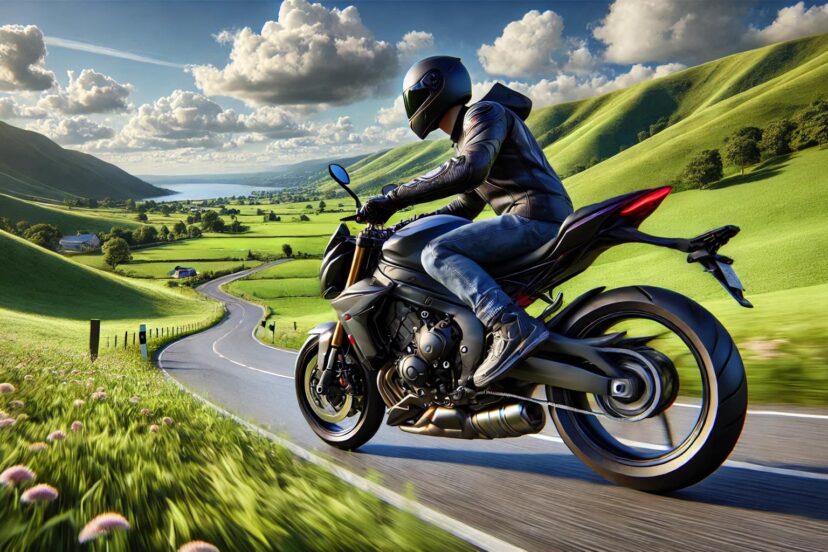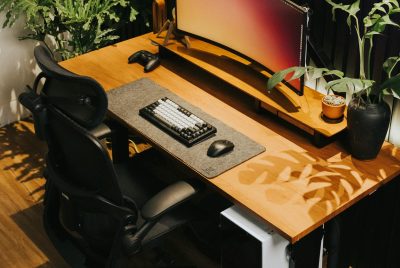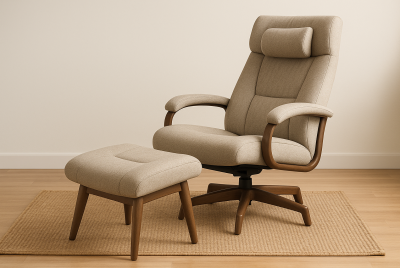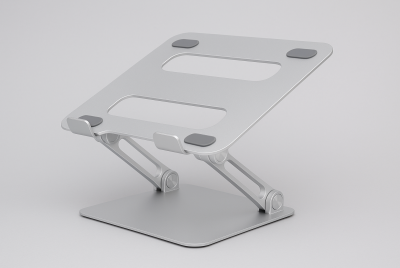Motorcycle Ergonomics: Ride in Comfort and Control
We may earn a commission for purchases made using our links. Please see our disclosure to learn more.
We can’t deny it, there’s something wonderful about riding a motorcycle, right? The sound of the engine, the kiss of the wind on your skin, and the sense of freedom it gives. But then, after a few hours of driving, the magic slowly fades when your back starts to ache and your hands feel like you’ve been through a boxing match. That’s where motorcycle ergonomics came in. Let’s explore how a few tweaks can make your riding more comfortable.
What Is Motorcycle Ergonomics?
There’s more to a motorcycle than just a mere transport vehicle. As a rider, your motorcycle is like an extension of you. Motorcycle ergonomics is the art and science of harmonizing that relationship. It’s about aligning seating, handlebars, foot placement, and your posture into a symphony of comfort and control. The goal is to tailor the motorcycle in a way that suits your body. For ease and elegance!
Why Does Ergonomics Matter?
Ergonomics matters, especially in terms of motorcycles. Why? Imagine riding a poorly fitted bike where you constantly twist just to find a comfortable position. That can lead to body strain. Misaligned ergonomics can lead to fatigue, discomfort, and even long-term strain. Now these things can be prevented, thanks to ergonomics. When your bike fits you perfectly, it’s transformative. Your body will move with your motorcycle (like an extension of you). Comfort enhances safety, safety boosts confidence, and confidence? That’s where the magic happens.
Scientific Insights on Motorcycle Posture and Comfort
Research highlights the importance of optimizing rider posture and seating comfort for enhanced control and reduced fatigue. A study on Ergonomic Posture for Motorcycle Riding by Neela Rajhans emphasizes the impact of seating positions and handlebar configurations on overall rider safety. Complementing this, a detailed analysis titled The Influence of Static Factors on Seating Comfort of Motorcycles by S. M. Mirbod et al. explores how seat design and foot peg placement can improve ergonomic comfort, offering practical recommendations for motorcycle design advancements.
The Anatomy of Motorcycle Ergonomics
1. Rider’s Triangle: The Foundation
The rider’s triangle—formed by the points of your hands, feet, and seat—is the holy grail of ergonomics. Get this geometry right, and you’ll glide like poetry in motion. Mess it up? Let’s just say you’ll feel every bump twice as hard. Yikes!
2. The Seat: Your Throne
Ah, the seat—a humble yet pivotal component. Too firm, and it’s a medieval torture device. Too soft? Well, you’ll sink like quicksand (and that’s not good for your back). The right ergonomic seat cradles your body and matches your riding style, be it laid-back cruising or adrenaline-fueled racing.
3. Handlebars: Your Guiding Force
Handlebars aren’t just for steering—they dictate your posture. Are your arms strained and shoulders aching after a ride? You’re not alone, I felt that too before. Guess what? A simple adjustment to your bars can transform a grueling trek into a joyful journey.
4. Foot Pegs: Your Base of Balance
Let’s not forget about the foot pegs. They determine posture and stability. Positioned too high, they’ll cramp your style (and your legs). Too low, and you risk losing control. Dial them in, and they become the silent ally you never knew you needed. Make sure you feel comfortable!
Adjusting for Your Body
- Know Your Riding Style
Are you a weekend wanderer, a marathon tourer, or a speed enthusiast who chases adrenaline? I’m a weekend wanderer sometimes. Each style demands its own ergonomic tweaks. Comfort is key for touring, agility rules in sport riding, and cruisers? Well, they’re all about laid-back luxury.
- Customizing the Seat Height
Your seat height is a crucial factor for stability mainly because it affects your connection to the ground. If you’re tiptoeing every time you stop (which is awkward and feel uneasy by the way), it’s time to explore adjustable seats or lowering kits. Trust me, your confidence will thank you.
- Handlebar Adjustments
Handlebars should align with your natural arm position. Picture reaching out to greet an old friend—comfortable, easy, and stress-free. If you’re feeling like a contortionist mid-ride, a handlebar tweak could be your salvation.
- Lever Positioning
Can you reach the lever easily? If not, then adjust it, my friend. Your brake and clutch levers should be extensions of your fingers, not distant strangers. Adjust their angles until they feel intuitive, reducing strain and enhancing control.
- Foot Peg Relocation
Sometimes, a small shift in foot peg position is all it takes. A centimeter forward, backward, or down can turn an “almost perfect” setup into one that feels tailor-made.
Gear Up for Comfort
- Wear the Right Gear
Comfort starts with what you wear. From padded gloves to boots that offer both support and flexibility, gear can make or break a ride. Don’t skimp—your body deserves the best.
- Invest in Cushions and Pads
For longer rides, seat cushions are lifesavers. Gel pads, air cushions, or even the classic sheepskin cover can banish discomfort and make hours on the road feel like minutes.
- Back Support: A Rider’s Best Friend
Think of a backrest as your personal guardian angel. It’s there to maintain your posture, support your spine, and whisper encouragement on those marathon journeys.
Fine-Tuning Your Posture
- Keep Your Back Straight
Your spine is your body’s shock absorber, and it works best when aligned. Imagine sitting tall on a throne—not rigid, but regal.
- Relax Your Grip
Death-gripping the handlebars doesn’t make you safer—it makes you sore. Let your hands rest lightly as if the bike were a dance partner you trust implicitly.
- Align Your Knees
Think of your knees hugging the tank like a loyal embrace. This simple posture stabilizes your ride and reduces strain on your legs.
Top Products to Enhance Your Motorcycle Ergonomics
Here’s a list of recommended products to improve your comfort and control while riding:
- Aftermarket Seats
- Gel or foam-padded seats for long-distance comfort.
- Examples: Saddlemen Adventure Seats and Mustang Motorcycle Seats.
- Handlebar Risers
- Adjustable risers to optimize handlebar height and reach.
- Examples: Rox Speed FX Pivoting Risers, SW-Motech Bar Back Risers.
- Seat Cushions
- Add-ons for extra comfort during long rides.
- Examples: Airhawk Seat Cushions, Wild Ass Gel Seat Pads.
- Vibration-Dampening Grips
- Reduce hand fatigue and numbness caused by handlebar vibrations.
- Examples: Progrip 714BK Grips, Kuryakyn ISO Grips.
- Riding Gear
- Ergonomic gloves, boots, and jackets that prioritize comfort and safety.
- Examples: Alpinestars SMX Gloves, TCX Touring Boots.
Common Ergonomic Problems and Solutions
- Numb Hands? Vibration-dampening grips can be a game-changer.
- Stiff Neck? A lighter helmet or better posture may ease the strain.
- Sore Back? Consider a lumbar cushion or rethink your seat.

The Role of Bike Type in Ergonomics
Cruisers feel like recliners on wheels, sport bikes push you forward for speed, and touring bikes are the Swiss Army knives of comfort. Each type has its quirks, but all can be adjusted to suit your needs.
How to Test Your Ergonomics
Start small. Ride around a parking lot, tweak your setup, and listen to your body. Sometimes, an extra pair of eyes—a riding buddy—can offer insights you might miss. But really, all you have to do is to listen to your body. Don’t ignore the pain or discomfort you might be feeling (if there’s any).
Maintaining Ergonomics Over Time
Motorcycles, like their riders, change with time. Regular maintenance, a bit of stretching, and strengthening exercises can keep you and your bike in perfect harmony.
Conclusion: Ride Comfortably, Ride Safely
Motorcycle ergonomics is about making you feel comfortable riding your motorcycle. Plus, it’s like connecting with your bike on a deeper level. Each adjustment brings you closer to the perfect ride, where every mile feels like a love letter to the open road. So, gear up, make those tweaks, and embrace the journey ahead. Trust me, those little changes can make a big difference. Happy riding!
FAQs
1. How can I make my bike more comfortable for long rides?
Start with the basics: adjust your seat, handlebars, and foot pegs to suit your body. Adding a cushion or backrest and wearing proper, supportive gear can make long rides much more enjoyable.
2. Can I change the ergonomics on any bike?
Absolutely. Most motorcycles can be customized with aftermarket parts like adjustable foot pegs, handlebar risers, and replacement seats. With the right modifications, nearly any bike can feel tailored to you.
3. What’s the best posture for motorcycle riding?
Keep your back straight but relaxed, grip the tank gently with your knees for stability, and maintain a loose, natural grip on the handlebars. Comfort and control go hand in hand.
4. How do I know if my bike’s ergonomics are wrong?
Discomfort, numbness, or fatigue are red flags. If you feel stiff, sore, or strained during or after a ride, it’s a clear sign that adjustments are needed.
5. Are there ergonomic differences between bike types?
Yes! Cruisers are designed for laid-back comfort, sport bikes emphasize speed and agility (often at the expense of ergonomics), and touring bikes focus on long-haul comfort with built-in adjustability.




